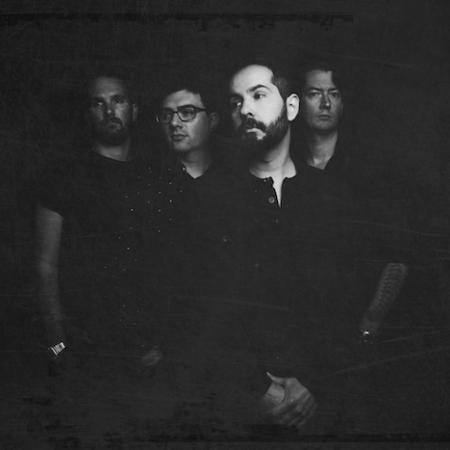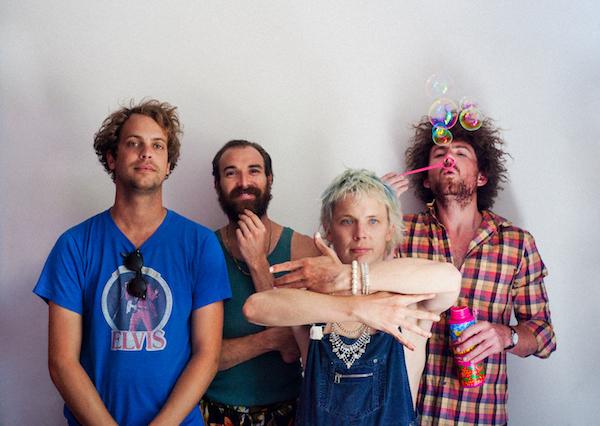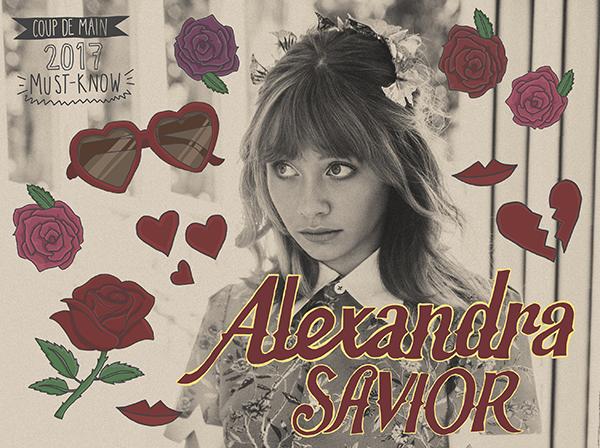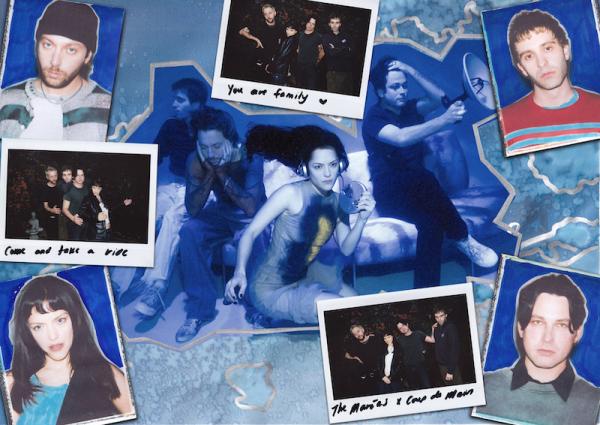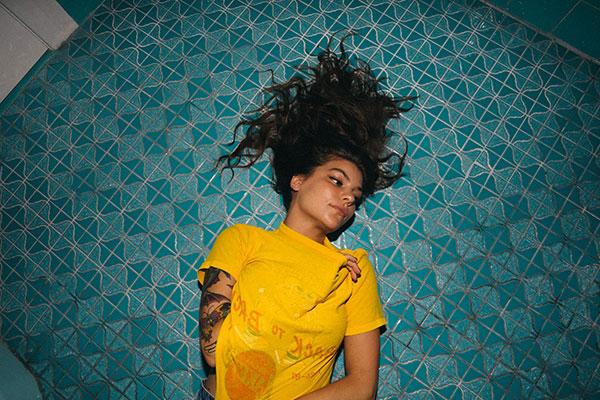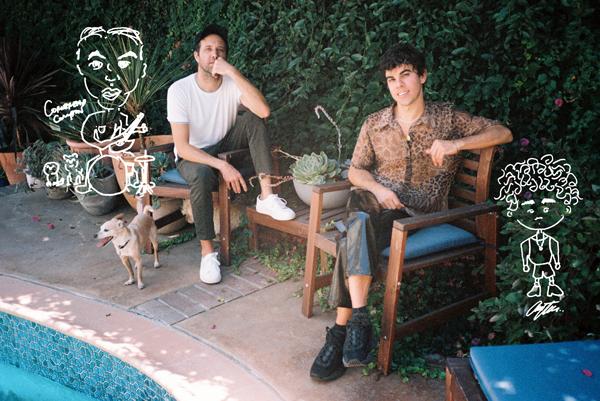On their latest album, ‘Truth Is A Beautiful Thing’, London Grammar sound more comfortable with their sound than ever before - while at the same time pushing the boundaries of what they're known and beloved for.
Enlisting the help of Paul Epworth (and his renowned The Church studio), Greg Kurstin, and even Jon Hopkins, the album is vast and expansive, with lead singer Hannah Reid soaring above the production of each song.
We spoke with the band’s Dot Major and Dan Rothman recently while they were in New Zealand, to discuss their new album ‘Truth Is A Beautiful Thing’, their production process, and more…
...being in the studio together, I’d say probably overall we’d all say that’s why we did it in the first place, and that’s what we love, but the feeling you get when you perform to people and the places you get to see is also amazing.
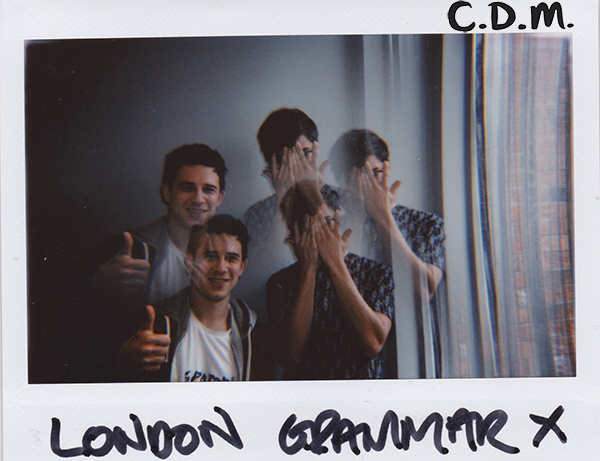
COUP DE MAIN: Happy birthday for last week, Dan! I have to know, did anyone throw any presents on stage at your show in Brisbane?
LONDON GRAMMAR - DAN ROTHMAN: <laughs> No-one actually threw any presents at me. My confidence isn’t too badly damaged, don’t worry. It was really sweet though, we’ve got this visual screen and they put a picture of my face up on it, and the whole crowd sang ‘Happy Birthday’ to me which was really sweet. Hannah did as well, then Dot brought this cake out, which was really cute as well. It was a very lovely moment.
CDM: Some of my favourite elements on the 'Truth Is A Beautiful Thing' album are the kind of long, drawn-out phrases - e.g. the long instrumentation in ‘Big Picture’ where Hannah’s voice sounds kind of like an instrument within the song. Do you approach her voice differently in different scenarios - as opposed to when it’s a super strongly sung chorus etc? How does that process work?
LONDON GRAMMAR - DOT MAJOR: I think we do that a lot, a lot of ambience and stuff, sometimes we use bits of Dan’s guitar, or bits of Hannah’s voice, or a bit of stuff from the instruments that are already there to build textures, rather than just using staple plug-in sounds. Sometimes it can make it feel more entwined with itself.
CDM: How does your production process work?
DOT: It depends, really. A lot of the time we’ll do a basic demo of something and then maybe I’ll get some programming inside, and a lot of the textures, different sounds and stuff, then we’ll take that to another producer and re-record the original elements - like the guitar, the voice, if we’re gonna do any drums or anything like that, so they happen in stages. Often it takes us three or four different times.
CDM: How do you keep expanding your production horizons?
DAN: I think Dot has naturally become, over time, a more and more accomplished producer, programmer, and engineer, just generally from a technical point of view in particular he’s just developed hugely since we started. That’s been a massive part of it from one point of view, then there’s also been the more collaborative side of things, whether it’s the three of us collaborating together with production or working with other producers - like in the case of ‘Big Picture’, that was a demo that we had done in the studio, we’d got it to a good place, Dot had put some of the beats on it, the music was all arranged roughly, the song was there. We sent it to Jon Hopkins who worked on the song and he just completely took it to a new place. That’s where that long drawn-out ending came from. That's just one example of how that can happen, but then equally when we work with someone like Paul Epworth, it’s much more like everyone is all hands on deck at that point, we work in a much more traditional sense of producing music. For ‘Rooting For You’ for example, he had us rehearsing the songs together. We experimented a lot with the production on this record, probably too much potentially, but it was enjoyable most of the time when we weren’t going mad.
CDM: How do you know when a song is complete?
DOT: Sometimes we do songs so many times, and we kind of think, ‘Maybe we want to stop and give it some space.’ Sometimes it’s just obvious. It depends on the song, something like ‘Big Picture’, we kind of felt like it was finished even before we worked with Jon, and then what Jon did was so good straightaway that we just knew it was finished. Whereas other songs like ‘Oh Woman Oh Man’ for example, we probably did that four or five times ourselves and just couldn’t really get it right. Then we did it with Paul Epworth, and that was just one four-day session, and it was finished.
DAN: We were just so productive in such a short space of time.
CDM: How do you best channel your creative energies, like what is your ideal creative environment?
DAN: I do think that it tends to be a little bit random, but there are certain environments where it is not good, and I think we’re beginning to learn what doesn’t work for us. We definitely went through a process on this record where at one point we overworked, and we spent three weeks in the studio, and it was not the right type of studio. There was no natural light and it was a bit sort of weird, and the result was not good, we didn’t really come out with anything positive about those sessions. But then, equally when we went in with Paul, we were working in The Church which is an incredible studio, we were all very enthusiastic to be there - but there were times, like when we did ‘Oh Woman Oh Man’ where we were just so productive, it felt like we all clicked, and it worked, and it came together very quickly, whereas other times when we were with him it was slower. It can be unpredictable in a way, but I think it’s best when we are relaxed and getting along together as a three, and we’re confident about the direction we’re going in.
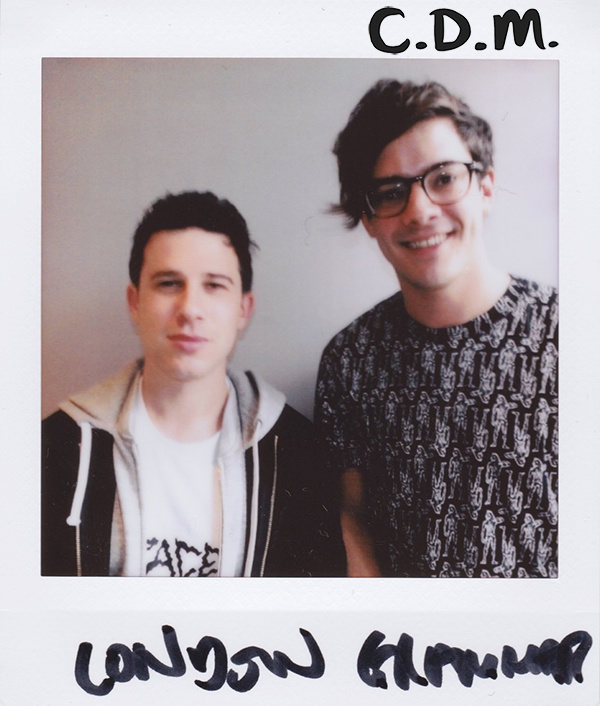
CDM: What was it like working in Paul Epworth’s studio The Church? Is it that multi-coloured room where you can change all the lighting?
DOT: There is that room - we actually weren’t really working in that room.
DAN: We did do a tiny bit in there.
DOT: That’s a bit more of a writing room. A lot of the time Paul will rent that out to different people when they’re just writing. There’s three of us, and if we have us three and an engineer it’s actually quite small to work in. We do some mixing in there. But the main room is just the big open, kind of church, and it’s just full of so much stuff. It’s an interesting vibe, because the desk is inside the live room, so if you want to monitor stuff you have to listen on headphones. It’s interesting.
DAN: And be really quiet, whenever anyone’s doing anything.
DOT: Which obviously Dan struggles with, every time he walks around it’s like Godzilla. But it’s really lovely.
DAN: It’s got an amazing history as well. It was owned by--
DOT: Dave Stewart, who was in the Eurythmics. And actually we’re touring with a band called Lo Moon, and Sam Stewart is Dave’s son. I’ve spoken to him about how he’d be asleep in the roof part when he was a kid, which is kind of mental. So it’s nice it has so much history.
CDM: The bonus edition of ‘Truth Is A Beautiful Thing’ has five unheard songs on it - was it important to you guys to include those songs for your fans to be able to hear?
DAN: It was actually. There was a big discussion about it at the time, we were quite unsure. In a way, I personally was a little bit against the idea of releasing more material, but I think the reality was that, I think we’d made fans wait a long time, so it felt unreasonable to only release an eleven-track record without offering them something more, and we had done a deluxe on the previous album. And also because there was some really, really good material on there that just didn’t quite fit with the record, so it seemed like a shame to not put that out as well. Particularly ‘What A Day’ and ‘May The Best’, those songs, and ‘Different Breeds’, we all love those songs a lot, but we just felt like it wasn’t right for the main record. So that’s why we ended up doing it.
CDM: Do you always end up with a larger number of tracks for the album, and have to cut them down? How does that decision-making process work?
DAN: Yeah. It’s a difficult decision process, there were far more than we ended up putting on the deluxe. The first time around there were probably even more. This time there was definitely 30 or 40 tracks. Beyond that, there’s other demos, half-finished ideas, there’s lots of bits and pieces. As you go along, you sort of decide, ‘Well, this one’s working,’ and you sort of choose the songs to continue working on. We’re trying to produce them to such a high-- We want them to sound to a high standard, so it’s kind of a natural evolution, I guess. Some just die out, sadly.
CDM: I saw the photo that you posted Dot, from your show at Margaret Court Arena with the rainbow lighting - has this always been a part of your set, or was it specific for that show?
DOT: The moment itself of where we put that up was actually new to this tour - before this we’ve been doing festivals, we haven’t really been doing encores, and we wanted to do something different with the encore. But doing the rainbow flag, we started it on that show, because there’s this whole thing with Margaret Court. I personally was really excited about playing that show because I’m quite a big follower of tennis, so I know that court quite well. It was strange, because obviously people were saying how it was even controversial that we were even playing there, just because of what it was called.
DAN: Plus the vote thing, as well.
DOT: But then obviously the vote was happening as well, so we wanted to make sure that people knew we were thinking about it, and it was quite a big thing when we were over there. So we carried on doing the visual the whole time we were there. It felt like a really special moment, and it hopefully meant a lot to people. It did look really good.
DAN: The reaction was always… Obviously it’s a particularly emotive topic, in Melbourne particularly because of the Margaret Court issue and everything surrounding it. Then when we did it everywhere else, it was obvious that it’s a big thing there. Wherever you go in Australia at the moment, any street you walk down, it’s there - it’s like what Brexit was for the UK.
OUR FAVOURITE SONG ON 'TRUTH IS A BEAUTIFUL THING'...
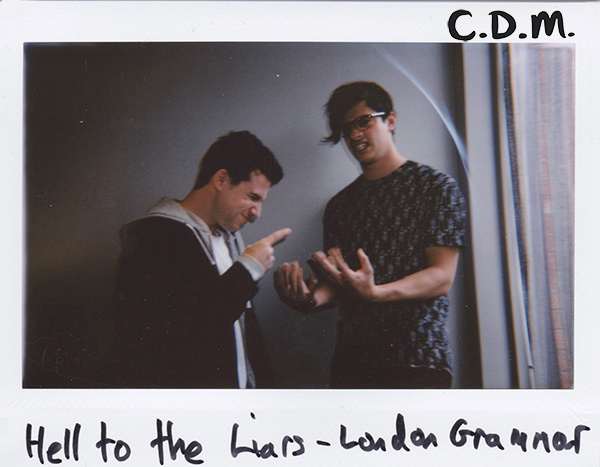
CDM: How involved are you with your stage visuals? The design looks so cool.
DOT: To be honest, this was probably the first time we’d been as involved. We did it with this guy called Tobias Rylander who basically designed the show, and he had another lady in America who was designing some of the visuals. But we worked quite closely with him, and we had a lot of time, we had a whole two week production rehearsal where we set everything up and we went through it all. He was the key driving force behind it, but I think we’re hopefully in a place where the show looks really good. It takes a while, sometimes you have a completely new concept and you’re constantly developing it - like that addition the other day - but I think it’s now in a place where we’re all really happy with it.
CDM: You release your music under your Ministry Of Sound imprint label Metal & Dust Recordings - have you always released under the imprint?
DAN: Yeah. We kind of did it when we first signed to Ministry Of Sound because they hadn’t really ever released a band before. They were an independent label at the time, they’re not now, so that was what we decided to do with them - with the view to put out other things on the label as well, which has changed, still. But I think the new record sort of came out on both Metal & Dust and Ministry Of Sound.
CDM: Would you guys ever sign any other artists to the label?
DAN: Yeah, it’s conversations we’ve had in the past about other artists, but they just haven’t happened to come to fruition. It was really in that window between the first and second records where it almost did happen, but then when we got back into making our own record, the time just went again. But hopefully it’ll be something we can look at this time.
CDM: Do you prefer writing/recording, or touring your music?
DOT: They’re just really different things. I mean, it’s funny, when you start playing music as a kid it feels like they’re the same principle - you perform, and you write, and a lot of the time you’re in bands where the writing process is in a band practice where you’re almost pre-producing. In learning to perform the track live, basically that’s the writing process, and then you just record it. But I think with us, we’re such a studio band in the sense that we just craft stuff in a really slow way in the studio, then we figure out how to play it live afterwards. So, both - being in the studio together, I’d say probably overall we’d all say that’s why we did it in the first place, and that’s what we love, but the feeling you get when you perform to people and the places you get to see is also amazing.
CDM: How do you go about transitioning from your recordings to a live setting? Do you have to rearrange and learn things specifically for the live show?
DOT: Yeah, a little bit. It’s difficult because obviously there’s only three of us.
CDM: You guys are making it hard for yourselves.
DOT: Yeah. But I think we work with some really good people who’ve helped us figure out how to do it. It’s a slightly convoluted way when we do it live, but hopefully it works, we want it to sound still like the record but with an element of naturalness to it, rather than just being--
DAN: I think we’ve always tried to play as many-- All, to as many of the natural elements. There’s a lot of looping it takes, but all of the natural elements are being played live. Obviously there’s a huge electronic part of the music, so a lot of the music is what Dot’s doing on a computer, which is essentially what a DJ would play out on his laptop.
DOT: The laptop stuff, a lot of that stuff I literally made on a trackpad. So when people are like, ‘Oh, you need to play all that live,’ it’s like, but it never was played live. It was literally made on a computer. It’d almost be weird to figure out to play it live.
DAN: We’ve tried to fuse it as best we can, and that’s where it becomes this weird journey. But Dot manages to have eight arms on-stage.
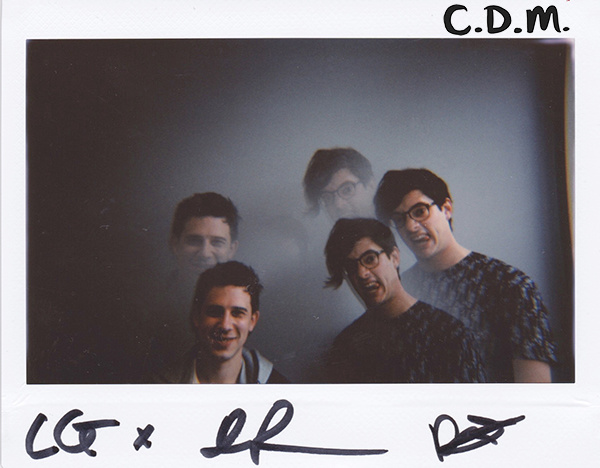
CDM: As well as touring yourself with huge artists like Coldplay, you’ve taken on tour the likes of Wet and James Vincent McMorrow - how do you go about choosing your opening acts?
DAN: It varies from tour to tour. With Australia, we actually toured with another band called Mansionair who I’d heard of previously, and they’d been put forward by our label. Particularly when it’s an overseas tour, we’re presented with some options, and we pick. Obviously James, was somebody we knew of and he’s just a class act performer, genuinely, so that was an obvious one. And Mansionair--
DOT: They were great.
DAN: And they were such sweet guys as well, and really professional, and really good musicians. That worked great. Then in other cases, like with Lo Moon playing with us - they’re gonna do our UK and Europe leg - they’re a band who we’re fans of, and asked to be on the tour with us. So it can vary, but we want bands and artists that we are into.
CDM: Do you think of yourselves more as musical architects or musical cooks?
DOT: I don’t know really, I wouldn’t say we’re architects that much. We’re not that meticulous in a way--
DAN: It’s weird, because Hannah is incredibly meticulous in some ways, and she can hear things in a mix - she hears things that nobody else is hearing - and then you realise you’re searching for the technical reason for why it’s doing it, and you’ll find it’s some click that’s existing there that nobody could hear but her. It’s extraordinary. So there is a meticulousness to what she hears a lot of the time, but in a very untechnical and almost spontaneous way. And then Dot is particularly technical, but is also quite a spontaneous person. Whereas I’m not very technical, but maybe not very spontaneous either. <laughs>
DOT: I’d say you’re more spontaneous. Dan’s always up for not overthinking things.
DAN: I don’t overthink the music, generally. I tend to be the one who’s like, ‘Guys, come on. Don’t worry too much.’
CDM: Jack Antonoff once told me that he thinks of his albums as houses (i.e. different songs as different rooms) - do you think you’d agree with the statement?
DAN: That’s very esoteric. It’s definitely quite a philosophical viewpoint - I’m not surprised, coming from Jack. A friend of ours is friendly with him, and I’ve heard he’s super creative in that way and he’s a brilliant producer and writer. I suppose in a way, I think we definitely think that from the point of view of making this album, that each song definitely takes a space within the record - some should be big, some should be small, in a way I understand what he’s saying about that, and they do build a larger house, if you like. I think for us, maybe we’d see it in a different metaphor, but in a way it’d probably be the same, so it’s kind of interesting.
CDM: What do you think is the difference between a good song and a great song?
DAN: I think a good song, in terms of a song in its purest form, maybe in a more traditional sense, is a song that’s really great and should be able to stand up without anything supporting it. I think me and Dot had that when Hannah wrote ‘Rooting For You’, she’d written the thing a cappella, and she just came and sang it to us, with no music whatsoever. It was just obvious that it was kind of an amazing song in its purest form. So when that happens, that’s pretty cool.
CDM: If D.O.T. was an acronym, what would each letter stand for?
DOT: I’ll think of Dan’s.
DAN: I would say Dot is: Delightful, Ostentatious - but in a good way, and Technical.
CDM: If D.A.N. was an acronym, what would each letter stand for?
DOT: I would say Dan is ‘Do Anything Now’.
DAN: Oh, that’s pretty good! That’s so much better than mine - I just thought of the first words that began with each letter.
London Grammar’s album ‘Truth Is A Beautiful Thing’ is out now - click here to purchase.
Watch the ‘Non Believer’ music video below…


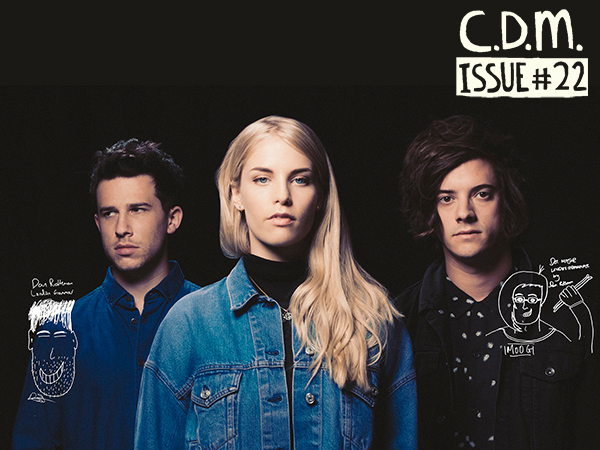
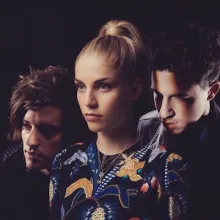 London Grammar
London Grammar